
A new report by The International Centre for Integrated Mountain Development (ICIMOD) assessing the Hindu Kush Himalaya (HKH) region has revealed that at least one third (a predicted 36%) of the region's glaciers will disappear by 2100, regardless of any positive actions to minimise climate change and global warming through the 2015 Paris climate agreement. However, failing to limit warming to an increase of 2⁰C, the report warns, will lead to a greater loss: two thirds of mountain glaciers could vanish by 2100.
The HKH mountain region covers around 3,500km across Afghanistan, Bangladesh, Bhutan, China, India, Myanmar, Nepal and Pakistan. This latest study shares research on the social, economic and environmental pillars of sustainable mountain development and calls for improvement of water resource management.
According to the report, for the past 50-60 years, the region has shown a rising trend of extreme warm events; a falling trend of extreme cold events; and a rising trend in extreme values and frequencies of both minimum and maximum temperatures.
The report explains that even if global warming is kept to 1.5 °C (the optimum goal set out in the 2015 Paris Agreement), then warming in the HKH region will likely be at least 0.3 °C higher, and in the northwest Himalaya and Karakoram at least 0.7 °C higher, where higher altitudes will experience greater warming effects. The resultant melting ice could lead to eventual water crises and increased likelihood of floods and drought - both directly through glacial melt and indirectly through changing weather systems.
'Such large warming could trigger a multitude of biophysical and socio-economic impacts, such as biodiversity loss, increased glacial melting, and less predictable water availability—all of which will impact livelihoods and well-being in the HKH,' the report reads.
350 researchers and policy experts from 22 countries collaborated on the 5-year study, partly in an attempt to address concerns over an unfounded 2007 report by the Inter-governmental Panel on Climate Change (IPCC), which controversially predicted the disappearance of all Himalayan glaciers by 2035. Measurements show that glaciers in the Central and Eastern Himalaya are shrinking at 40cm per year, and some are receding by up to 30 metres each year.
Although the primary focus of global warming research into its effects on glacial terrain has mostly been centred around Greenland, the Arctic and eastern Antarctica, the Hindu Kush Himalaya - along with the Tibetan Plateau - has come to be known as the 'Third Pole' since its ice fields contain the largest fresh water reserve outside the polar regions, providing irrigation, power and drinking water for nearly 20% of the global population (1.3 billion people).
Climate induced changes will affect the poorest mountain inhabitants the most, the report explains. 'About one third of the 250 million HKH mountain people live on less than $1.90 a day; more than 30% of the region's population doesn't have enough to eat, and around 50% face some form of malnutrition, with women and children suffering the most.'
The ICIMOD plans to assemble a Himalayan Council to mirror the Arctic Council, an intergovernmental forum set up to enable cooperation on environmental and sustainability issues in the region - a discussion complicated by the fact that India and China are major fossil fuel consumers. The Director General of the International Centre for Integrated Mountain Development (ICIMOD), David Molden, told the Nepali Times: 'China is taking significant steps in mitigation, as is India. I hope we can use the report findings to continue our discussion with greenhouse gas emitter countries and take urgent action. We have to keep the world [limited] at [a maximum warming of] 1.5°C, otherwise these mountains are going to be in deep trouble.'
But what do these findings mean for climbers and trekkers, and how can we help? The Hindu Kush Himalaya is home to the highest concentration of 7000m+ peaks in the world, but its mountains remain some of the lesser-explored peaks of the Himalayan range due to political instability and accessibility. Although the focus of this report was on one specific region, in more popular mountaineering areas within the Himalaya and beyond the effects of global warming are nonetheless alarming. Sergiu Jiduc, an alpinist, environmental geoscientist, and sustainability specialist shared his perspective with UKC:
'Unsurprisingly, many Himalayan mountains and their traditional climbing routes may become unclimbable or too dangerous to explore due to rapidly changing snow and ice conditions. But what's more important is that the frequency and magnitude of mountain hazards will increase under the impact of climate change. This applies too to the uncertainty in water supplies and agricultural production for human populations across the HKH. Under these exacerbating circumstances, the fragile tourism industry in the HKH - an increasingly important lifeline for mountain populations - will begin to experience severe impacts. Worrying about what mountain to climb or where to spend the summer backpacking may be replaced by a fight for survival for mountain communities in particular but also for tourists who may end up in the path of glacial lake outburst floods.
'This report is an excellent attempt to extend the accessible knowledge base about HKH and provide answers to the range of policy-oriented questions we all grapple with. I hope that decision makers and the wider public will take note of this assessment so that we can meet the multidimensional challenges arising in the HKH. I look forward to seeing regional governments and supranational bodies working together to advance sustainable mountain development, especially with a view to benefiting from the global conservation and development agenda, such as the Sustainable Development Goals for 2030. As for climbers and walkers, choose wisely and consider adding a humanitarian, research or conservation component to your expeditions.'
Sergiu previously worked on the Karakoram Anomaly Project in Pakistan's Shimshal Valley, where - in contrast to global trends - Karakoram glaciers seem to be stagnating or even growing (UKC article). A mystery of glacial science, rapidly advancing glaciers dam river valleys, causing the accumulation of glacial melt-water and increasing the risk of catastrophic glacial floods - a phenomenon known as Glacial Lake Outburst Floods (GLOFs). The project was designed to investigate how the Karakoram anomaly is affecting the probability of GLOFs in the Shimshal and Hunza valleys of the Karakoram and to communicate the risk and potential solutions to the local communities.
The ICIMOD survey in 1999 and 2005 found 8,790 glacial lakes covering a total of 801.83 square km in the Hindu Kush Himalaya, 203 of which have potential to cause GLOFs.
In Europe, according to one study by a team at Joseph Fourier University in Grenoble, if present climatic conditions are maintained, the Mer de Glace in the Mont Blanc Massif will continue to shrink dramatically in the coming decades, retreating by 1200m between now and 2040 - and that's assuming the climate situation doesn't worsen in the meantime.
For more information on the effects of climate change in mountain regions globally, read the 2018 Mountain Adaptation Outlook Series Synthesis Report from the United Nations Environment Programme:
Mountain Adaptation Outlook Series - Synthesis Report
Watch a video about the Hindu Kush report's findings:



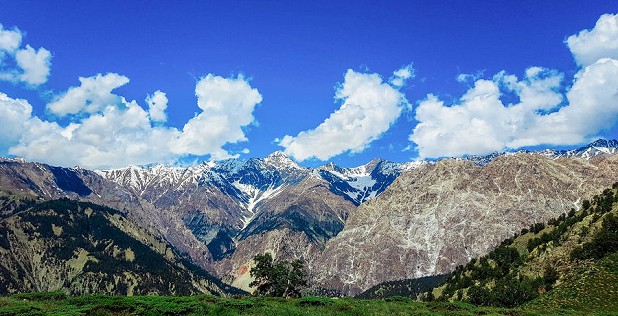






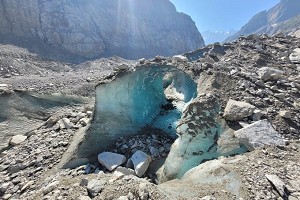
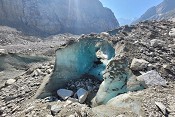

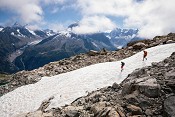
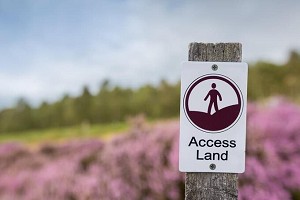

Comments
It seems that the authors of this research use "HIndu Kush Himalaya" as a term to describe the whole mountainous area which includes the Hindu Kush, Pamir, Karakorum, and all the Himalaya. The maps and the populations affected do suggest this. "Greater Himalaya" is perhaps a more usual term for this combined area. The title of the UKC article is, I think, misleading. I was interested as a visitor, long ago, to the Afghan Hindu Kush, but it's much broader than that, and very worrying.
Thanks to UKC for publishing.
Martin
Yes, I was confused too! Lots of references to areas outside the HK as we know it. Good suggestion, I'll make the title broader since it is more appropriate.
It's a confusingly all-encompassing term, it seems:
http://www.icimod.org/?q=1137
'[HKH region and adjacent mountain areas include: Afghanistan – all provinces except Kandahar, Helmand, Nimroz, Farah, and Herat; Bangladesh – Chittagong Hill Tracts; Bhutan – whole country; China – parts of Yunnan (Diqing, Nujiang, Dali prefectures), Sichuan (Ganzi, Aba, Liangshan prefectures), Gansu (Gannan, Wuwei, Zhangye prefectures), Xinjiang (Kashigar, Kezilesu, Hetian, Altai prefectures), whole of Tibet Autonomous Region and Qinghai; India – the 11 mountain states (Arunachal Pradesh, Himachal Pradesh, Jammu and Kashmir, Uttarakhand; Assam, Manipur, Meghalaya, Mizoram, Nagaland, Sikkim, and Tripura) and Darjeeling district of West Bengal; Myanmar – the states of Kachin, Chin, Shan and Rakkhain; Nepal – whole country; Pakistan – North Western Frontier Province (NWFP), Federally Administered Tribal Areas (FATA), Northern Areas, Ajad Jammu and Kashmir (AJK), and 12 districts of Baluchistan]'
It makes more sense when the hyphen is included: Hindu Kush-Himalayas as in it spans from one region to the other. You also occasionally see Hindu Kush-Karakorum-Himalayas to mean the same thing.
Ah, that makes much more sense. Thanks!